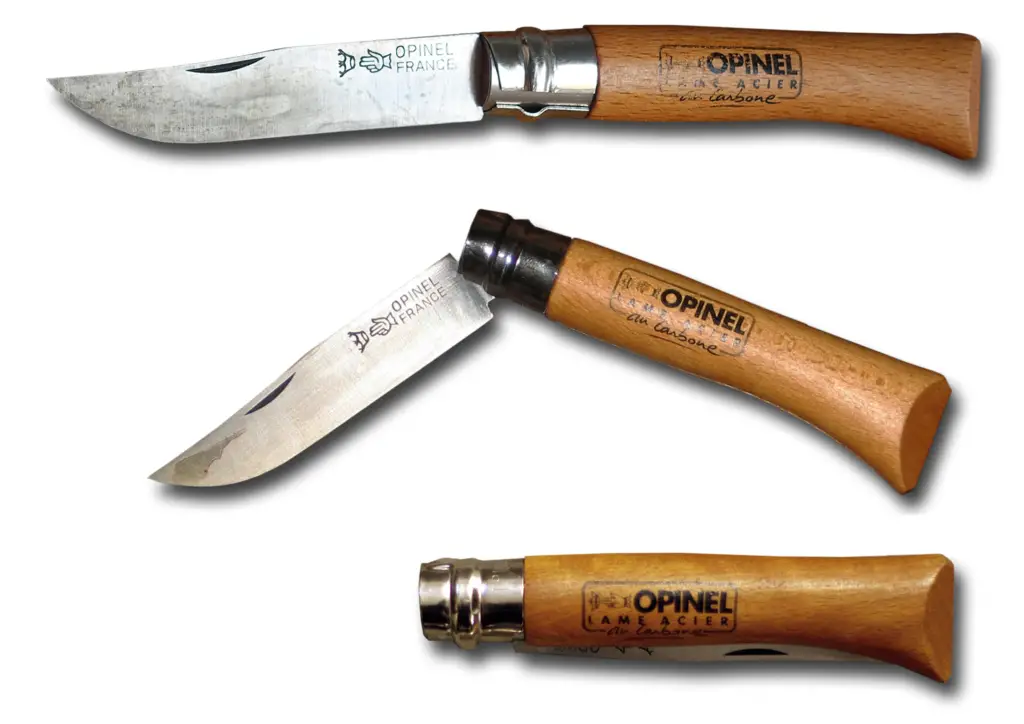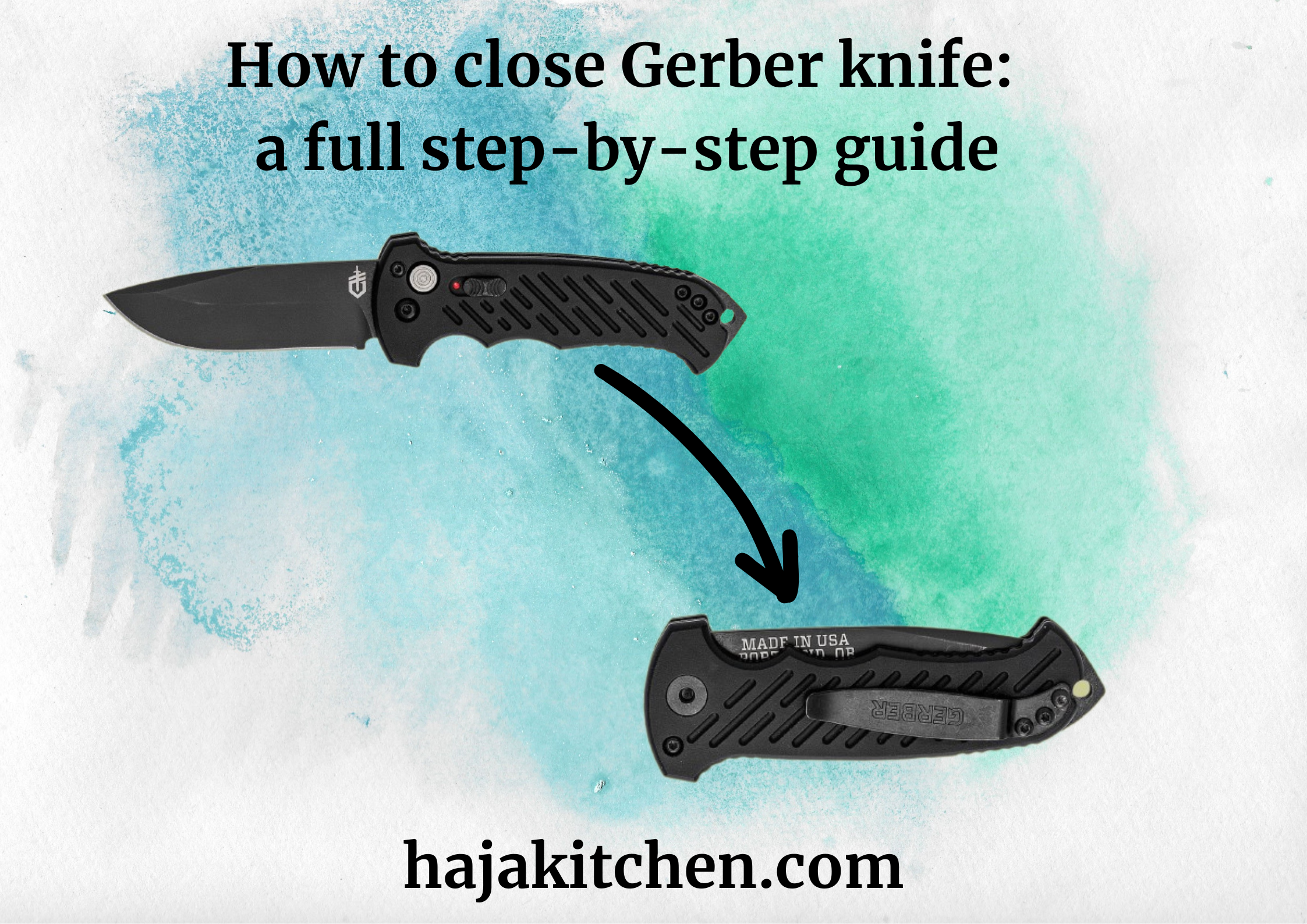A Gerber knife refers to a brand of knives that that has been in business since 1939, known for creating problem-solving and life-saving knives, multitools, cutting tools, and equipment. Gerber knives are designed for various disciplines, including hunting, fishing, and military tactics.
They offer folding knives that can be easily carried and deployed with one hand. Gerber knives are hand-crafted in Portland, Oregon, and are known for their quality and reliability. Whether you’re an outdoor enthusiast or need a versatile tool, Gerber knife tools are famous.
So, let’s discuss how to close Gerber knife properly.
Why is my pocket knife so hard to close?

If you’re finding it difficult to close a Gerber knife locking mechanism properly, there could be a few reasons and considerations to keep in mind.
Gerber knife Locking Mechanism
Gerber knife often comes with various locking mechanisms such as frame locks, liner locks, or other locking systems. Check if you are familiar with the specific lock mechanism of your knife and understand how to disengage it properly before trying to close the blade. Specifically, it is good to know the consistent angle of the blade.
Pivot Point
The pivot point is where the blade links to the handle. To close the knife correctly, apply light pressure to the back of the blade next to the pull point while keeping your fingers clear of the blade edge. This going to help you to release the blade from its unlock position.
Index Finger and Thumb Stud
A folding knife has thumb studs on the blade that can assist in opening and closing the knife. To close a Gerber knife, you can use your index finger to push the blade toward the closed position while maintaining control of the handle with your other fingers so that you can see the blade closed.
Closed a Gerber knife
Verify that the blade is fully closed into the handgrip and securely locked in the blade-closed position. Check that you have the Gerber knife properly positioned about the handle and that nothing is getting in the way of it closing all the way.
What is liner lock on knives?

A liner lock is a popular type of locking mechanism found on many folding knives, including Gerber. It is designed to securely hold the blade in the open position during use and prevent accidental closure while your finger’s blade facing.
Steps on how to properly close a Gerber knife with a liner-locking mechanism
- Make certain that your fingers are clear of the blade and handle before attempting to close the folding knife.
- Locate the liner lock on the inside of the knife handle. It is a flat body made of steel that extends from one side of the handle towards the center.
- With your fang or index finger, apply pressure to the liner lock, pushing it to the side away from the blade. This releases the blade from the locked position.
- While maintaining pressure on the liner lock, slowly and carefully fold the blade back into the handle. Make sure the cutting edge of the blade is facing away from your hand.
- Once you close a Gerber knife, ensure that it is securely locked in place. You should feel some resistance when trying to reopen it.
Remember to always handle knives with caution and follow the company’s directions for the specific Gerber knife model.
If you are still experiencing difficulties, it may be helpful to consult the user manual or contact Gerber’s Knife customer service for further assistance.
How can one close a Gerber knife without using a button?
Once you refer to closing a Gerber knife without using a button, it depends on the specific model and locking mechanism of the knife.
Gerber knife typically features various locking mechanisms like liner locks or frame locks, which require manual disengagement to close a Gerber knife.
If your Gerber pocket knife has a liner lock, you can close it without using a button. The liner lock is a mechanism that holds the blade unlocked during the use of the knife.
To close a Gerber knife, you will need to locate the liner lock on the inside of the handle and apply pressure to the blade, moving it away from the blade. This action releases the blade, enabling you to fold it into the handle once more.
How do I handle a stuck Gerber Knife blade?

If you’re experiencing a stuck Gerber knife blade, here are some steps you may try to handle the situation:
- Be sure that your fingers are off the blade and handle before setting out to handle the stuck blade.
- Determine your locking mechanism Gerber knife, such as a liner lock or frame lock. Understanding the version of the lock in your Gerber knife will help in troubleshooting.
- Check if the blade is in the locked position. If it is, carefully release the locking mechanism by pushing or sliding it in the direction indicated. This should relieve the blade from movement.
- Once the locking mechanism is disengaged, try to apply gentle pressure or tap the back of the blade next to the pull point using a non-marring tool. Be cautious not to use excessive force that could damage the frame lock.
- If the blade still doesn’t move, try to use two thumbs studs if your Gerber knife has them. Apply gentle pressure to the thumb studs while ensuring that your fingers are clear from the blade’s path.
- Make sure that you are holding the handle firmly for stability and control while attempting to free the stuck blade.
- If the blade is facing in an incorrect or unintended direction, make sure to carefully reposition it in the correct alignment before trying to close the blade.
Conclusion
Always prioritize your safety and exercise caution when handling a stuck blade. If you are unable to resolve the issue and safely close the knife, it is recommended to reach out to customer support for further assistance and guidance.
FAQs
Are Gerber folding knives trustworthy and robust?
Gerber knives are generally considered to be trustworthy and robust. They are known for their durability and reliability, making them a popular choice among outdoor enthusiasts, survivalists, and professionals.
Gerber knives are designed to withstand tough conditions and their blade are known for their sharpness and strength.
Many users praise the sturdiness of Gerber knife tools, particularly their fixed-blade models. The blades are often lauded for their ability to handle heavy-duty tasks and their overall build quality.
Gerber also offers multitools with spring-loaded pliers, further showcasing the robustness of their products.
When it comes to folding pocket knives, Gerber offers a range of options with different features and designs. The decision to choose a specific model would depend on your preferences and specific needs.
How is a Gerber pocket knife opened?
To open a Gerber knife, the method can vary depending on the specific model.
Here are a few common approaches:
1. Manual Opening. The knife can be opened manually by using your thumb to apply a little pressure to the thumb peg or the blade’s spine. The thumb studs are often located on the blade next to the pivot point. Apply a little pressure to the thumb pin to partially open the blade, and then use your fingers to fully extend the blade.
2. Assisted Opening. Some knives feature an assisted opening mechanism. This typically involves partially opening the blade manually until the mechanism is engaged, after which the blade can be flicked open with a quick wrist motion. The assisted opening feature is activated by either a button or a spring-loaded mechanism.
3. Automatic Opening. Gerber also offers an automatic knife that has a spring-loaded mechanism and can be opened with the press of a button. These knives are typically compact and designed for quick deployment.
It’s important to note that the specific method to open a Gerber knife can vary between models, so it’s recommended to consult the user manual or handbook provided by Gerber for your specific knife model to ensure proper and safe operation.
Can dirt or debris affect how a Gerber knife opens and closes?
Yes, dirt or debris can indeed affect how a Gerber knife opens and closes.
Accumulated dirt, dust, or debris can hinder the smooth operation of the knife mechanism, such as the pivot point or locking mechanism.
This can result in difficulty in opening or closing the knife properly.
If dirt or debris gets into the knife’s moving parts, it can cause friction, resistance, or jamming, making it challenging to manipulate the blade.
It is important to keep your Gerber knife clean and free from dirt and debris to ensure smooth and reliable operation.
Regular maintenance, including cleaning and lubricating the knife, can help prevent these issues and maintain optimal performance.
If you are experiencing difficulty in opening or closing your Gerber knife due to dirt or debris, it is recommended to clean the knife thoroughly.
Carefully disassemble the knife if necessary, and use a brush or compressed air to remove any particles or dirt from the moving parts. After cleaning, apply a suitable lubricant to ensure smooth functioning.
Remember to always follow the manufacturer’s instructions and recommendations for cleaning and maintenance of blades specific to your Gerber knife model.


